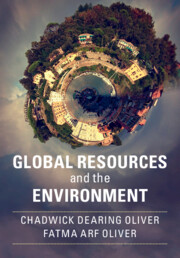Book contents
- Global Resources and the Environment
- Reviews
- Global Resources and the Environment
- Copyright page
- Dedication
- Contents
- Preface
- Acknowledgments
- Figure Credits
- Part I Introduction, Dynamic Systems, and Change
- Part II People
- Part III Climates
- Part IV Landforms
- Part V Biodiversity
- Part VI Water
- Part VII Agriculture
- Part VIII Energy
- Part IX Minerals
- 26 Rocks and Mineral Properties, Mining
- 27 Rocks and Minerals: Production, Use, Distribution
- Part X Forests
- Part XI Perspective
- Book part
- Index
- Plate Section
- References
26 - Rocks and Mineral Properties, Mining
from Part IX - Minerals
Published online by Cambridge University Press: 05 July 2018
- Global Resources and the Environment
- Reviews
- Global Resources and the Environment
- Copyright page
- Dedication
- Contents
- Preface
- Acknowledgments
- Figure Credits
- Part I Introduction, Dynamic Systems, and Change
- Part II People
- Part III Climates
- Part IV Landforms
- Part V Biodiversity
- Part VI Water
- Part VII Agriculture
- Part VIII Energy
- Part IX Minerals
- 26 Rocks and Mineral Properties, Mining
- 27 Rocks and Minerals: Production, Use, Distribution
- Part X Forests
- Part XI Perspective
- Book part
- Index
- Plate Section
- References
Summary
Information
- Type
- Chapter
- Information
- Global Resources and the Environment , pp. 409 - 423Publisher: Cambridge University PressPrint publication year: 2018
